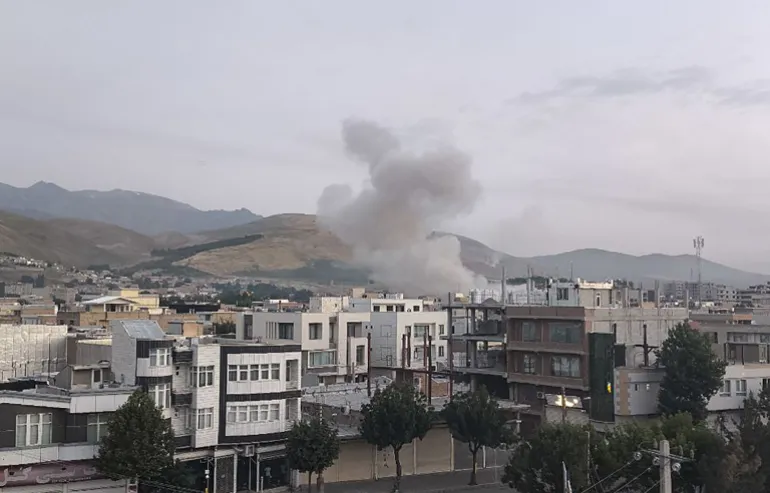- Courses
- GS Full Course 1 Year
- GS Full Course 2 Year
- GS Full Course 3 Year
- GS Full Course Till Selection
- Answer Alpha: Mains 2025 Mentorship
- MEP (Mains Enrichment Programme) Data, Facts
- Essay Target – 150+ Marks
- Online Program
- GS Recorded Course
- NCERT- First Ladder
- Polity
- Geography
- Economy
- Ancient, Medieval and Art & Culture AMAC
- Modern India, Post Independence & World History
- Environment
- Governance
- Science & Technology
- International Relations and Internal Security
- Disaster Management
- Ethics
- Current Affairs
- Indian Society and Social Issue
- CSAT
- 5 LAYERED ARJUNA Mentorship
- Public Administration Optional
- ABOUT US
- OUR TOPPERS
- TEST SERIES
- FREE STUDY MATERIAL
- VIDEOS
- CONTACT US
National Education Policy (NEP) 2020 completed 3 years
National Education Policy (NEP) 2020 completed 3 years
17-07-2023
Latest Context:
Recently, the National Education Policy (NEP) 2020 completed three years of its introduction.
About the National Education Policy (NEP) 2020
- Basically, the NEP 2020 is a comprehensive framework for the development of education in India.
- It was approved by the Union Cabinet in July 2020, and replaces the previous National Policy on Education, which was formulated in 1986.
Key features of the NEP 2020 are:
School Education:
- The new policy emphasizes on universal access to quality early childhood care and education for children aged 3-6 years.
- It adopts a 5+3+3+4 structure for school education, replacing the existing 10+2 system.
- The foundational stage includes 3 years of pre-primary education (ages 3-8), followed by a preparatory stage (grades 3-5), middle stage (grades 6-8), and secondary stage (grades 9-12).
- The policy promotes a multidisciplinary and holistic approach, integration of vocational education, and a greater focus on experiential learning and critical thinking.
- Board exams will be reformed to test core concepts and promote holistic development, while a new National Assessment Centre, PARAKH (Performance Assessment, Review, and Analysis of Knowledge for Holistic Development), will be established to assess student learning.
Higher Education:
- The NEP 2020 aims to increase the Gross Enrolment Ratio (GER) in higher education to 50% by 2035.
- It proposes the establishment of a single regulator, the Higher Education Commission of India (HECI), to replace multiple regulatory bodies.
- The policy encourages multidisciplinary education and offers multiple entry and exit options, allowing students to choose their preferred learning pathways.
- Universities will be given more autonomy, and greater emphasis will be placed on research and innovation.
- The NEP also seeks to internationalize education by promoting collaborations with foreign institutions and attracting foreign students to study in India.
Teacher Education:
- The policy emphasizes on the importance of high-quality teacher education and aims to transform teacher education programs to be multidisciplinary, integrated and flexible.
- Continuous professional development opportunities will be provided to teachers, and a National Mission for Mentoring will be launched to support their professional growth.
- The use of technology for teacher training and support will be encouraged.
Other Key Aspects:
- The NEP 2020 emphasizes on the integration of technology in education, including the use of online and digital learning resources.
- It promotes the inclusion of students from disadvantaged backgrounds, with a focus on reducing disparities and ensuring equal opportunities.
- The policy also recognizes the importance of Indian languages and promotes their use in education.
- It emphasizes the development of vocational skills and offers flexibility in subject choices.
- The NEP 2020 calls for increased public investment in education, aiming to reach a target of 6% of GDP.
What are the challenges standing in front of NEP 2020?
- Implementation at the State Level: Education is primarily a state subject in India, and the successful implementation of NEP 2020 relies heavily on the commitment and capacity of individual states. Ensuring uniform adoption and effective execution of the policy across all states poses a significant challenge.
- Adequate Funding: The NEP 2020 aims to increase public spending on education to 6% of GDP. However, achieving this target requires substantial financial resources. Ensuring adequate funding for infrastructure development, teacher training, technology integration, and other initiatives outlined in the policy remains a challenge.
- Teacher Training and Capacity Building: The NEP 2020 emphasizes on the importance of quality teacher education and continuous professional development. However, scaling up teacher training programs to cater to the vast number of educators in the country poses a challenge. Ensuring the availability of qualified trainers, resources, and sustained support for teachers' professional growth is crucial.
- Bridging Socio-Economic Disparities: The NEP 2020 aims to bridge socio-economic disparities in education. However, achieving equitable access to quality education across all regions and socio-economic groups is a complex task. Addressing issues of infrastructure, educational resources, and ensuring inclusivity for marginalized communities and remote areas pose significant challenges.
- Infrastructural Requirements: The NEP 2020 proposes significant changes in the education system, including the establishment of new schools, upgradation of existing infrastructure, and the introduction of technology-enabled learning. Meeting the infrastructural requirements to accommodate the growing student population and implementing the necessary technological infrastructure poses challenges, particularly in rural and remote areas.
- Monitoring and Evaluation: Effective monitoring and evaluation mechanisms are essential to assess the progress and impact of the policy. Establishing robust monitoring systems, defining clear indicators, and ensuring regular evaluation pose challenges, as it requires coordination among multiple stakeholders at different levels.
- Public Awareness and Stakeholder Engagement: Creating awareness and getting support for the NEP 2020 among the public, educators, administrators, and other stakeholders is crucial for successful implementation. Ensuring effective communication, engaging with various stakeholders, and addressing concerns and resistance to change are challenges that need to be addressed.
- Transition Challenges: The NEP 2020 proposes a significant restructuring of the education system, including changes in the curriculum, assessment methods, and pedagogical approaches. Managing the smooth transition from the existing system to the new framework poses challenges in terms of curriculum development, teacher training, and aligning various educational boards and institutions.
Conclusion:
Addressing these challenges requires sustained efforts, collaboration among different stakeholders, adequate resources, and a phased implementation plan to ensure the successful execution of the NEP 2020 and the desired transformation of the education system in India.
Must Check: IAS Coaching Centre In Delhi



